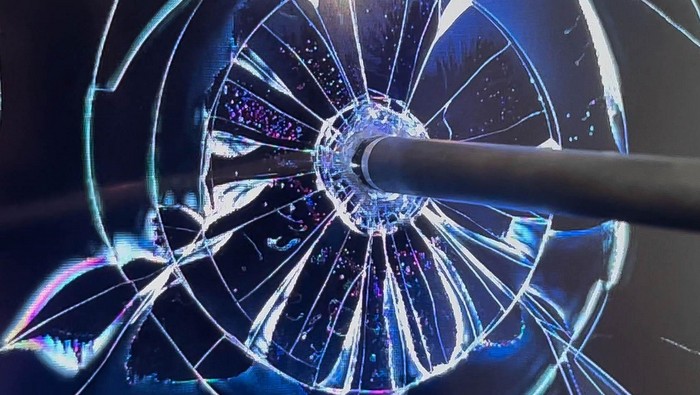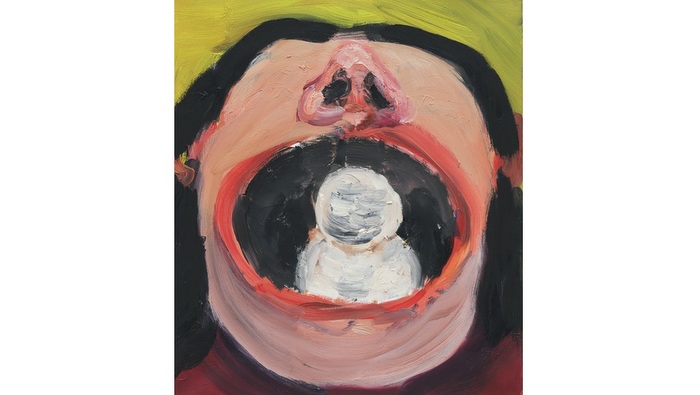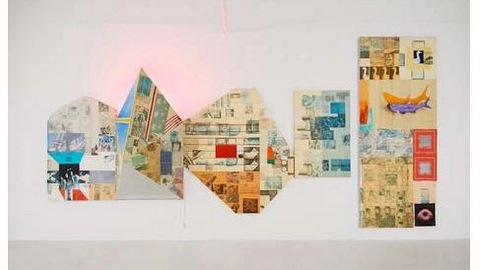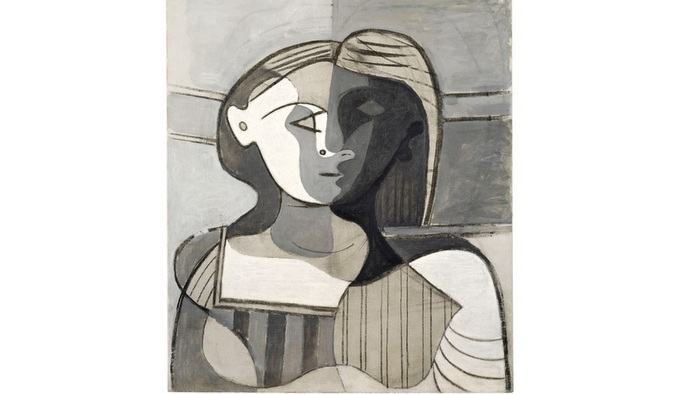Rarely-seen important work, originally commissioned by the National Endowment for the Arts for Children’s Hospital Medical Center in D.C., to be displayed at art fair
Edward Tyler Nahem Fine Art (ETNFA) is pleased to be exhibiting Robert Rauschenberg’s monumental work, Periwinkle Shaft, at Art Basel Miami Beach from December 7th to the 10th. The work, 30-feet wide by 14-feet high, was commissioned by the Arts in Public Places Program of the National Endowment for the Arts, for placement at the Children’s Hospital Medical Center in Washington, D.C. (now the Children’s National Health System).
“We’re excited to be sharing Periwinkle Shaft with the public at Art Basel Miami Beach, as this is arguably Rauschenberg’s most important post-60’s work,” said Edward Tyler Nahem, founder of the eponymous gallery. “This is a work that is iconic for many reasons; its imagery and vocabulary are emblematic for the artist. It was also dear to Bob’s heart because it would be in a children’s hospital.”
Given its scale, Periwinkle Shaft will come to occupy close to half of the real estate of the gallery’s stand at Art Basel Miami Beach.
The NEA’s commission began during one of Rauschenberg’s most prolific periods, between 1975 and 1981, while he was creating the series known as the Spreads. Both literal and metaphorical in meaning, the Spreads refer to the physical size of the works, as well as to the colloquial term to describe the wide-open expanses of the Texas landscape, where the artist was raised. Other works in the Spreads series can be found at Tate Modern, London and at the Modern Art Museum, Fort Worth Texas, among others.
Mary Lynn Kotz, in her monograph, Rauschenberg/Art and Life, describes this series in detail:
“The Spreads, laid out in grid like, usually rectangular patterns, refer back to Rauschenberg’s silkscreen paintings in that they are filled with colorful imagery from magazines. He plucked disparate images from the media, juxtaposing them in ways that have more to do with composition than narrative. The method was transfer-printing, using the enormous weight of the Grasshopper [a type of printing press] – eight hundred pounds of pressure per square inch. The magazine images were placed face down on the flatbed, squirted with solvent, and then pressed onto extra-fine, smooth-weave canvas or a swatch from Rauschenberg’s storeroom of found fabrics. The canvas or fabric had been laminated onto mahogany panels by using matte medium (an acrylic) adhesive and iron-on heat glue. In the workshop underneath the painting studio, found objects were nailed, riveted, screwed, or glued onto the surface…
Nearly every Spread has some eccentricity of shape. Panels jut out from the background, carrying images and objects into the viewer’s space. The paintings feature images of animals, flowers and other plants, along with athletes, planets, maps, children of all cultures, and the wonders of technology. The colors reflect the atmosphere around Captiva [the location of Rauschenberg’s Florida studio] – muted Gulf blues and palm greens, accents of bright yellow and scarlet. . . .
Sheets of transparent colored acrylic and colored Plexiglas mirrors entered his store of materials in the series; concealed neon and other kinds of electric lighting gave most of the new Spreads a colorful glow.”
Periwinkle Shaft is a quintessential example of the Spreads as so well described by Kotz above. Joan Young, in her essay on this period (Guggenheim Museum retrospective, 1997), notes that the works of this stage, “are also reminiscent of the early Combines in their union of two-dimensional imagery and three-dimensional objects.”
Periwinkle Shaft is a personal retrospective of sorts, yet it is simultaneously imbued with the playful palette and motifs that one would expect from a commission of this nature: bright colors, energetic shapes, kinetic forms, humorous juxtapositions and relatable imagery, such as silhouettes of a duck, an enlarged apple and a three-dimensional fish. In this work, Rauschenberg brings to bear his full arsenal of artistic powers on a grand scale, creating a monumental work that engages and inspires.
About Edward Tyler Nahem Fine Art
Edward Tyler Nahem Fine Art, founded in 1985, specializes in modern, post-war and contemporary art and exhibits a broad range of international artists. Located in the heart of New York City, the gallery presents monographic and thematic exhibitions at its flagship on 57th Street. In addition, Nahem brings dynamic programming and important works to art fairs internationally, including Art Basel, Art Basel in Miami, FIAC and TEFAF (New York).
Related Publications

Leo Pum presents HYPER LIKE at HYPER HOUSE
December 18, 2025
Aargauer Kunsthaus. Klodin Erb. Curtain falls dog calls
December 17, 2025












